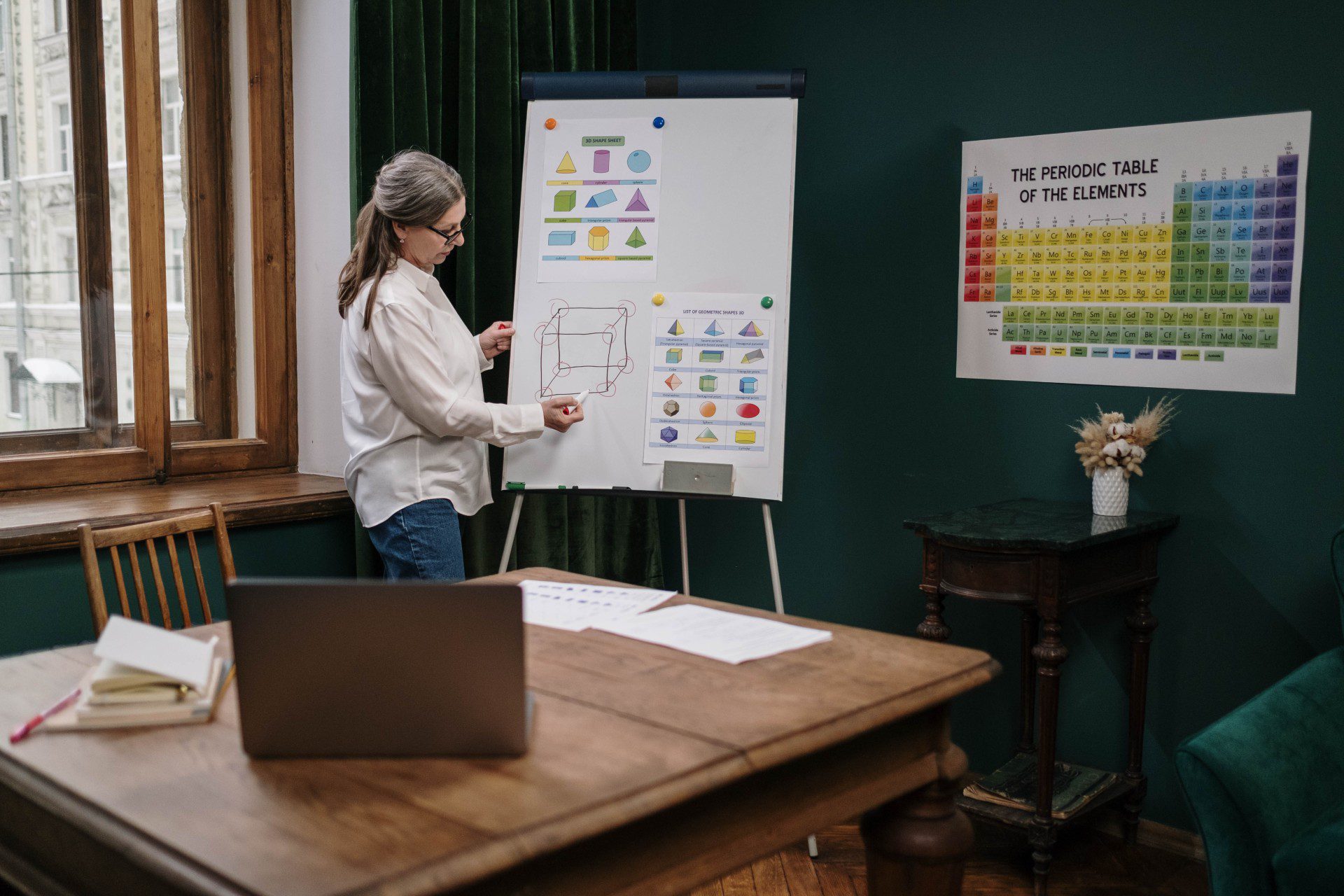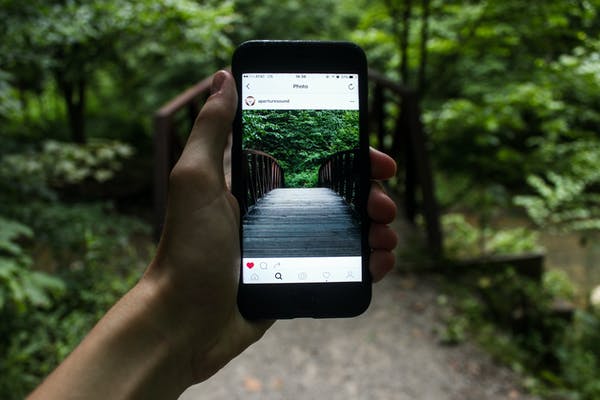We all know that social media has become a part of daily lives and will continue to be controversial. Recall the many stories about how social media takes people out of the moment, and instead of enjoying a concert or sporting event — people are preoccupied with taking selfies. Most of the time, I say, “so what?”
I’ve also come across stories about teachers losing their jobs because they shared a picture of themselves on summer vacation with a glass of wine in front of them. And, more recently, Facebook and Twitter have banned the President of the United States of America. Obviously, this has sparked a debate on everything from free speech to tech regulation.
Advice from Spider-Man’s Uncle Ben
When it comes to social media, we may want to heed the advice that’s usually attributed to Spider-Man’s Uncle Ben, “with great power comes great responsibility.”
If you don’t play by social media rules, aka their terms of service — that’s all on you. If you receive blowback because you shared a sexist or homophobic meme, well, that’s probably well-deserved. I mean, even Parler, which has described itself as “the last place for free speech online,” has rules that users have to play by.
In short, if you misbehave on social media, don’t be appalled by the consequences. But, these “little” rules only scratch the surface when it comes to our reliance on social media.
A few issues with social media.
Getting banned or facing backlash is nothing to balk at. While undoubtedly frustrating, it can damage your professional reputation, have financial implications, put your privacy at risk, and can affect your personal relationships. But, these consequences are far from the only concerns with social media.
Becoming ingrained in the very fiber of our daily lives — social media has come with the following negative side effects.
It wastes your time.
“On average global internet users spent 2 hours and 22 minutes on social media per day, though trends differed widely by country,” writes Katharina Buchholz for Statista. “In many of the markets that Global Web Index surveyed, social media use had shrunk or plateaued in Q1 2020 when compared with 2019 and 2018 figures – the 2021 report will reveal if the coronavirus pandemic has reversed this trend.”
However, I think most of us can agree that we’ll continue to be spending a lot of time on social media in 2021 and beyond.
Why’s this a problem? Well, 2 hours a day may not seem like a while. But, if this is a daily occurrence, that can quickly add up. I mean, that would be 10 hours each week that you’re devoting to social media.
Personally, that’s time that could be better spent. Whether that wasted time could be better spent reading, exercising, engaging in a hobby, or connecting with friends or family, only you can determine that. Remember, time is your most valuable resource. Time really shouldn’t be squandered on something that can cost you your livelihood, ruin relationships, and drain you emotionally.
Impacts your mental and physical health.
Numerous studies have found that frequent social media use disrupts sleep, reduces physical activity, and physical health effects like eye strain and poor posture. It may even alter your appetite.
Time and time again can contribute to feelings of isolation, anxiety, and depression. Why? You can thank factors like cyberbullying, doomscrolling, and comparing yourself to others.
While this won’t be the case for everyone, one study did find that those who decreased their regular use of social media by limiting it to just 30 minutes a day reported reduced levels of depression and loneliness. And, they even felt better after just three weeks.
Affects communication skills.
“Social media has some damaging effects on communication skills and unfortunately lasting damaging effects when social media is used in excess or obsessively,” says Colette Lopane-Capella, M.A., LMHC, LPC.
“One, it affects the ways individuals react to emotions, social cues, or nonverbal cues, as it erases this important aspect of the basis of communication,” explains Lopane-Capella.
“Secondly, it often elicits this normalized lessen social activity face to face interactions, as individuals will associate social media communication as effective communication and then in hand lessen the likelihood to have face to face interactions.”
“Lastly, self-esteem and self-confidence are negatively affected often through social media, unrealistic expectations that are viewed.” How does this impact communication skills? Well, it leaves “individuals with negative feelings about themselves and hindering there communicating with others, as internally are struggling and not feeling adequate.”
Accelerates groupthink.
“Social media encourages groups of people connected to each other online to share similar ideas and beliefs,” says psychiatrist Alex Anastasiou, DO. “Basic human psychology suggests that people have a tendency to conform to their ‘group’ so that they can fit in and be well-liked. Over time, the values and beliefs shared by a group become more similar.”
Moreover, social media can further groupthink.
“Like-minded groups assemble with remarkable ease on social media platforms, which can also cloud our judgment,” clarifies Nick Wolny over at Fast Company. “In groupthink, the quest for unanimous opinion can override our ability to objectively consider other opinions.”
What exactly is groupthink? Irving Janis defined it in his 1972 book Victims Of Groupthink as “a deterioration of mental efficiency, reality testing, and moral judgment.” Eerie how that was written 30 decades before social media was a reality.
What’s more, a 2015 YouGov Omnibus survey “found that 57% of Americans who use social media have posted or texted something that they regret afterward,” adds Wolny. And, “one in six of those respondents claimed to regret a post at least once a week.”
“There’s also a mountain of research that connects increased screen time with a reduced capacity to regulate self-control or finish what you start, particularly in young people,” he states.
It makes you worse at multitasking.
To be real, multitasking can get hairy. For instance, it is possible for you to be on a conference call when doing a mindless or repetitive task, like folding laundry. However, only a very small percentage of people can do challenging activities at once. In other words, it’s not possible for you to be on an important video call while engaged in deep work.
However, switching between various social channels could make you even less effective at multitasking. According to a 2018 review published in the Proceedings of the National Academy of Sciences, frequent social media multitaskers didn’t perform as well as lighter media multitaskers when it came to a variety of cognitive domains.
Can lead to information overload.
I have said this before, but the simplest definition of information overload “is exposure to excessive amounts of information or data.” And, that definitely includes the amount of content you’re absorbing from social media each day — remember, that’s over 2 hours daily.
Why’s this problematic? Well, information overload can make us more stressed, impact our health, and fracture personal and professional relationships. As if that weren’t enough, it can make us less productive, impair decision-making, and might make us stupider.
It’s distracting.
And, last but certainly not least, social media is distracting. In fact, social media is the fourth biggest distraction at work, ensuing emails, pointless meetings, and interruptions.
The reason? We’re constantly pressured to post updates, as well as like, share, and comment on other’s posts. And, we’re also expected to reply to social media messages instantly.
How to keep yourself in check with your social media use.
I know that I might have come across as too anti-social media. But, there are positive aspects to it. These include:
- Being able to communicate and stay up to date with friends, family, and customers.
- Connecting with new friends and groups.
- Promoting and spreading awareness about worthwhile causes.
- Providing you with a creative outlet.
- Discovering and sharing information.
But, to reap these benefits, you need to keep your social media use in check. And, that’s possible if you use these four tactics.
Refresh yourself on social media 101.
I get it. There’s always a learning curve when it comes to new social media apps. For new users as well. I mean, my mom joined Facebook and is still getting the hang of it.
But, for a majority of us, let this sink in. Facebook and Twitter have been around since 2004 and 2006, respectively. At this point, we should have a solid grip on social media etiquette.
What does that mean? Well, for starters, no matter your settings, whatever you share on social media isn’t private. Furthermore, even if you delete a post, it truly never disappears. If you posted something repugnant and offensive, you can bet that someone will grab a screenshot of it.
Additionally, whether you realize it or not, you’re not just representing yourself. You’re also representing your family, friends, community, business, or school. Why let them receive backlash because you couldn’t control yourself on social media?
I’d also suggest that you block out some time to reacquaint yourself with the following do’s and dont’s.
Dos:
- Complete and update your profiles — primarily checking your privacy settings and keeping your profiles current.
- Share thoughtfully. Ask questions like, “Does this provide value?” or “Is this something that grandmom would be ashamed of?”
- Prioritize your networks. You might not have to be on Twitter if your audience isn’t. Or, you may just want to stick with LinkedIn if you’re using social media for professional purposes.
- Post regularly and keep it positive and meaningful.
- Interact with others and encourage conversations. It would be helpful to have pre-written“rules” that are posted on your social media accounts.
Dont’s:
- Never bully, spam, complain, or abuse hashtags.
- Post anything that will offend others or violates the TOS.
- Share or publish anything with grammatical errors or from questionable sources.
- Avoid being “that” person. You know. The individual who seemingly is on social media 24/7. When it comes to promoting your brand or business, stick with the following formula: post one promotional post for every four non-promotional posts.
- Share too much information or be too opinionated, like why your political candidate is the best choice.
In the words of Houston Texans defensive end J.J. Watt, “Read each tweet about 95 times before you send it. Look at every Instagram post about 95 times before you send it.”
“A reputation takes years and years and years to build and it takes one press of a button to ruin it,” added Watt. “Don’t let that happen to you. You’ve done so much work; you’ve put in so much effort. Don’t let one moment ruin your entire life because you wanted to be funny or you were mad or because you had a mood.”
“If you use it properly, you can use it unbelievably. You can interact with your fans and share with the world what you’re doing. Just be smart about it.”
Think twice before commenting and posting.
“Don’t respond to a post or comment out of emotion,” communications expert Leslie Shore told My Domaine. “Take time to process what you have read or seen, and allow yourself time to reflect on your thoughts before commenting out of anger or frustration. Remember that everyone is entitled to their own opinions.”
I’d also add that you avoid social media when you’ve indulged in one too many adult beverages. Nothing can ever come good from social media when mentally impaired — even if you think you’re not. Thankfully, apps, such as Drunk Locker or Drunk Mode, can prevent you from making this mistake.
Additionally, restrain yourself from sharing every aspect of your life. “Keep your personal conversations personal,” Shore says. “There is no need to take your private life public. Posting about your partner’s choice of a birthday present for you or gossiping about your S.O. are communications best left out of the public eye.”
In the same vein, you may want to have separate channels for various facets of your life. For example, you could have a personal account and another for your business. Just keep in mind that there are a lot of sleuths out there who will find out these accounts belong to the same individual. But, it may provide a buffer between your personal and professional life.
Reduce screen time.
Finally, you can’t get yourself into trouble if you aren’t spending as much time on social media. And, if you recall, this will also enhance your health, wellbeing, and productivity. But, how can you realistically make all these “better options” happen?
In a previous Calendar article, Choncé Maddox recommends that you do the following if you want to limit your time on social media.
- Utilize your phone’s alarm. “Set a timer or alarm each time you get on social media so that it goes off just a few minutes afterward,” she says. “If you usually spend 30 minutes scrolling on Facebook each morning, try to limit this by setting your alarm to 10 or 15 minutes.”
- Delete your apps. Perhaps the easiest solution is to delete these apps from your phone. Since you have to log in from a browser, it won’t be as easy to access your accounts, which in turn will reduce the time browsing social feeds. Also, this removes the temptation to overshare.
- Leave your phone in another room. Another easy trick? Just leave your room in another room when you’re working or spending quality time with your family.
- Block apps and websites. There are plenty of apps out there that will either block or limit the time spent on social platforms, such as Forest.
- Engage in healthy distractions. It’s easy to be tempted to scroll through your feeds when you’re watching TV. So, find healthier alternatives like going for a walk, cleaning your workspace, decluttering your home, or learning something new.
- Designate tech-free zones. Don’t allow your smartphone into certain locations, like your dining or bedroom.
- Change the layout of your phone. If you don’t want to uninstall your social media apps, then you can move them off your home screen so that they aren’t front and center.
Batch your social media efforts.
How can you still active on social media and thwart FOMO if you aren’t connected 24/7/?
Give batching a spin.
“For those unfamiliar with this productivity hack,” batching is “where you simply arrange tasks in set groups,” my Calendar co-founder John Rampton explained in Entrepreneur.
“Spend two hours Monday morning (or whatever time is the best for you), creating and curating social content for the week,” he states. “This time may be spent brainstorming your content calendar with your team for the entire year. Or, your goals may require and include engaging with influencers or customers twice a day.”
“By grouping similar tasks together, you’ll avoid multitasking and frequent distractions — and you’ll likely find that batching makes you feel less stressed,” John adds. “Most importantly, the times that are set aside give you structure and boosts your productivity.”
However, to avoid feeling anxious about missing out, research conducted at Duke University’s Center for Advanced Hindsight “found three to be the magic number.”
“The researchers found that three batches of notifications are perfect,” says Rampton. “They recommend that your first batching timeframe should be during your morning commute or right when you get to work. The second batch takes place at the end of lunch. And, the final batch, block, or timeframe — you’ll schedule — will be when you’re heading home for the day.”
Getting started with social media batching.
- Determine the best times to batch and brainstorm content ideas.
- Create a content calendar so that you aren’t “scrambling around every day trying to create or find material to publish.”
- Figure out the best way to batch. For example, you could do this by platform, topic, or calendar days.
- Schedule and monitor your content using SMMS tools like Hootsuite, Buffer, or Sprout Social.
- Block out specific times to work on social media. “Finally, reserve specific times in your calendar exclusively for social media, just as you would for any other important task,” John advises. “In my calendar, every Monday from nine a.m. to ten a.m. — I block an hour and schedule my posts for the week. I also block out 15-minutes every morning, midday, and late afternoon to check-in.”
Final words of advice.
How you decide to run your social channels is totally up to you. Just be aware that if you’re going to have a social media presence, be careful and consider your words and reputation.
And, to sweeten the pot, you won’t be wasting more time on social media than you have to burn. In turn, you’ll be healthier and more productive — it’s a win-win.





